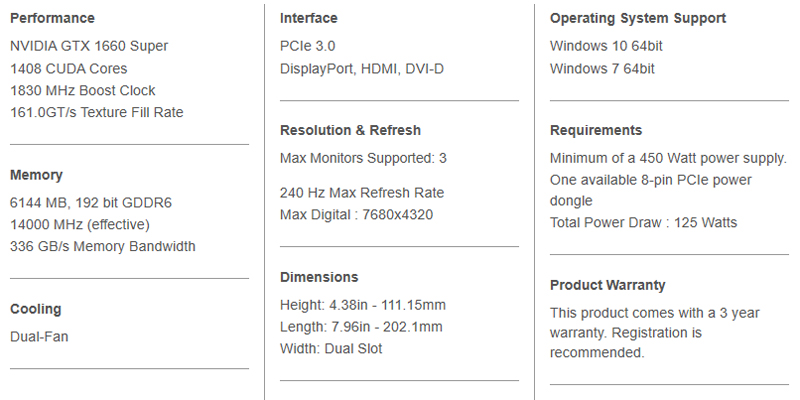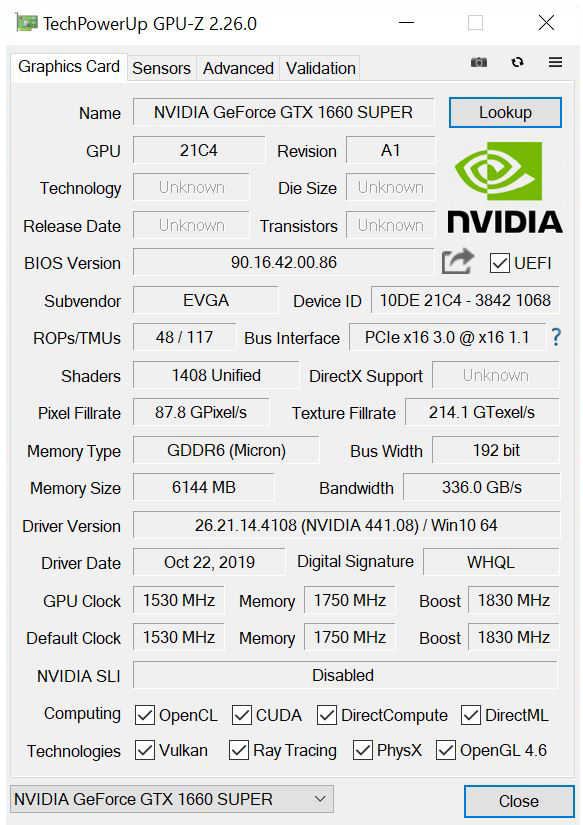EVGA GeForce GTX 1660 SUPER SC ULTRA Specifications
This is nowhere near the dual NVIDIA Titan RTX level of power, cost, or performance, but it is important nonetheless. Not everyone that is interested in GPU compute has the means to purchase a high-end setup. One of NVIDIA’s key differentiators is the ability to make CUDA programming accessible to a wider audience. It can scale performance and capability to a user’s budget which means as someone becomes more proficient in CUDA, they can get hardware to match up to the largest supercomputers. Again, if you are running deep learning and AI workloads, you will want the RTX 2080 Ti (or Titan RTX) if funds permit. If they do not, we have benchmarks showing what you can expect.

Taking a closer look at the specifications of the NVIDIA GTX 1660 Family we can see that the GTX 1660 Ti is the higher-spec GPU, there is a trade-off with clock speeds with the GTX 1660 Super being faster while the GTX 1660 Ti has more Stream Processors and Texture Units that give the Ti the performance edge.

As we highlighted earlier, the big takeaway here is that we are going to get more memory bandwidth with GDDR6.
Testing the EVGA GeForce GTX 1660 Super SC Ultra
Here is our GPU test configuration which will likely be updated in 2020 but it is what we have used for more than a year.
• Motherboard: ASUS WS C621E SAGE Motherboard
• CPU: 2x Intel Xeon Gold 6134 (8 core / 16 Threads)
• GPU: EVGA GeForce GTX 1660 Super SC Ultra
• Cooling: Noctua NH-U14S DX-3647 LGA3647
• RAM: 12x Micron 16GB Low Profile
• SSD: Samsung PM961 1TB
• OS: Windows 10 Pro Workstation
Here is the obligatory GPU-Z shot of the card:

GPU-Z shows the primary stats. The GPU clocks in at 1530 MHz and can boost up to 1830. Pixel Fillrates run at 87.8 GPixels/s, and Texture Fillrate comes in at 214.1 GTexel/s.
Let us move on and start our testing with computing-related benchmarks.




Being a “compute card” isn’t an excuse of putting DVI-D port into it. It should be common to have 3x DisplayPort and 1x HDMI.
@Bull
Lots of 144Hz gaming monitors sold a few years back used an out-of-spec DVI-D input that requires more power than a USB-powered Displayport to Dual-Link adapter can provide.